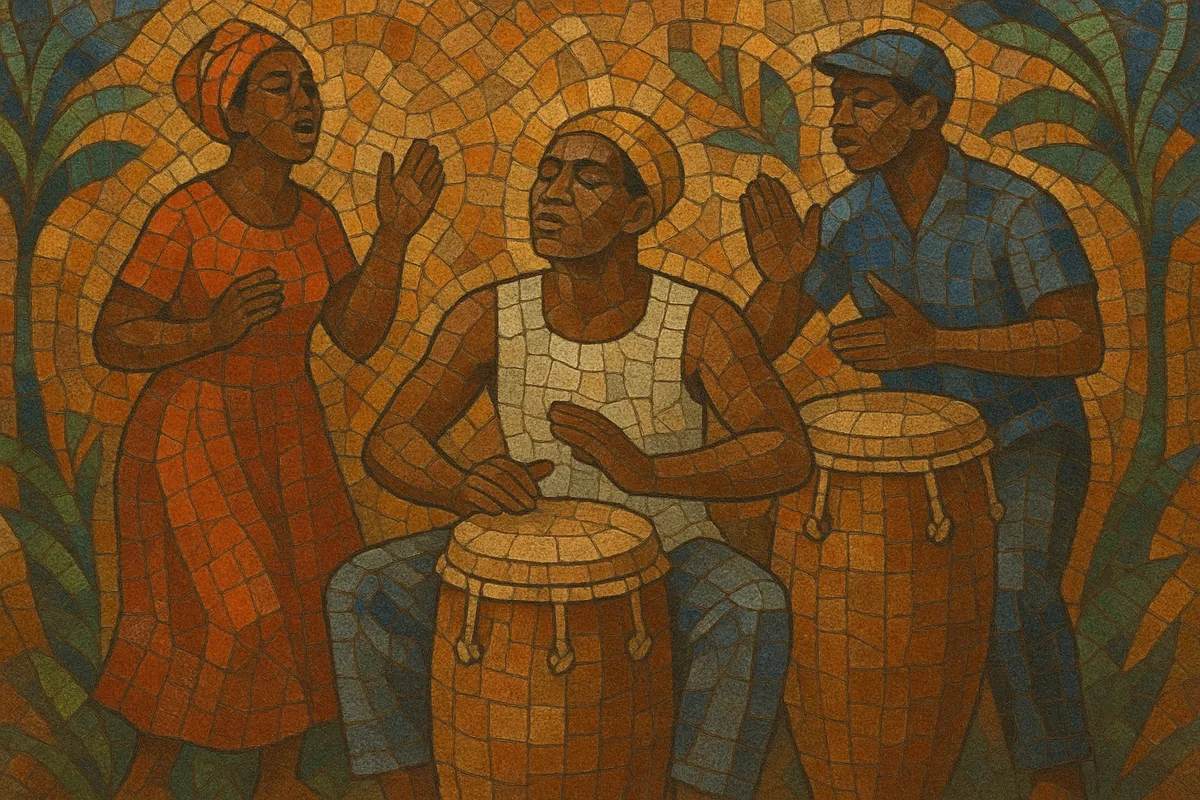Gwo ka is the traditional drum-and-song music of Guadeloupe, shaped during the slavery era and rooted in West and Central African rhythmic heritage. It centers on the ka drum ensemble, call-and-response singing in Guadeloupean Creole, and participatory dance.
The genre revolves around seven principal rhythms—léwòz, kaladja, graj, toumblak, padjanbèl, woulé, and mendé—each associated with distinct tempos, moods, and social functions. Performances are communal, often taking place at léwòz gatherings where the lead drummer (makè) engages in a dialog with dancers and the chorus.
While traditionally unaccompanied by harmony instruments, modern “gwo ka modèn” fuses the ka rhythmic language with jazz, funk, and contemporary Caribbean styles, extending its reach beyond rural contexts to concert stages and recordings.
Gwo ka emerged in Guadeloupe during the transatlantic slavery period, when enslaved Africans preserved and transformed drumming, dance, and song practices under plantation oppression. Using locally made ka drums and sticks (ti-bwa), communities maintained a musical language of resistance, communication, and cultural memory. Call-and-response vocals in Creole, polyrhythmic layering, and dance improvisation became defining features.
Over time, practitioners codified seven core rhythms—léwòz, kaladja, graj, toumblak, padjanbèl, woulé, and mendé—each signaling a specific affect and function (from combative and ceremonial to sensual or contemplative). Léwòz nights (community gatherings) anchored social life, enabling dialogue between the lead drummer and dancers. Songs often contained veiled social critique, history, and spirituality.
In the postwar and postcolonial eras, artists began documenting and modernizing the tradition. Marcel Lollia ("Vélo") became an emblematic master drummer. Gérard Lockel theorized “gwo ka modèn,” harmonizing ka rhythms with jazz idioms. Groups and cultural movements (e.g., Akiyo) brought gwo ka from yards and rural spaces to festivals and stages, while recordings helped canon formation and pedagogy.
A new generation of drummers and composer-performers connects gwo ka to jazz fusion, world music, and contemporary Caribbean styles. Artists such as Erick Cosaque, Edmony Krater, Christian Laviso, and Sonny Troupé advanced the music in studios and international venues. The core participatory ethos endures, keeping léwòz practice alive alongside concertized formats and cross-genre collaboration.


